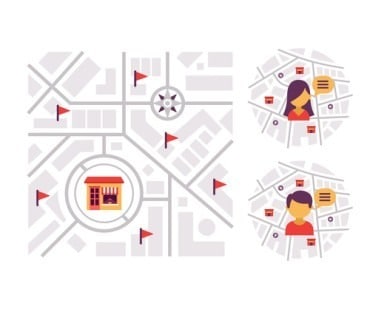
Use of data streams is essential to meet the growing demand for real-time data analytics and customer insights.
We stream data every day when we watch our favorite shows, play online games, or interact on social media. It is everywhere, from the web to the cloud to the Internet of Things (IoT). Artificial intelligence (AI) needs streaming data to learn. Businesses rely on data streams for a constant flow of information, enabling them to make data-driven decisions in real time. These benefits also come with challenges commonly associated with major technological shifts, including security risks, fragmented adoption, and a lack of standardization.
Before cloud migration, data was stored centrally by an organization in data centers where the information could be accessed when a business needed to make decisions, consuming large data sets and then analyzing them. In today’s business climate, you need to be able to create a new plan in real time based on a constant loop of information that can be managed and analyzed. Information continuously flows like headlines scrolling across the lower part of your television.
Data streams give you a three-dimensional approach to business processes because rather than pulling information from a central repository, decisions are being made closer to where the action is happening. IoT-enabled smart refrigerators, for example, help restaurants maintain food safety by using sensors to monitor food temperatures and humidity. Automated alerts are triggered when the temperature needs to be adjusted. These smart appliances can adapt to changing conditions based on real-time information.
See also: Whether Ghostbusting or Analyzing Data: Cross the Streams
Dealing with high volume and high risk
One of the biggest challenges is the sheer quantity of data moving back and forth in real time. According to IDC, data sprawl is on the rise and the Global DataSphere is expected to more than double in size from 2022 to 2026. Information storage and processing occur in diverse locations rather than in a centralized data center. For instance, if AI computations occur at the edge of the network without centralized control, data is dispersed. This increases the points of exposure, providing more opportunities for cybersecurity threats. Oversight becomes a concern because this constant stream of big data can make it easier for vulnerabilities to go unnoticed. Speed also plays a factor because faster data transmission may outpace traditional security measures.
Along with more robust security measures, one of the ways organizations can mitigate risks is through a hybrid cloud approach. Computing resources, storage, and service run on a combination of public, private, and on-premises infrastructure. A hybrid cloud server allows the combination of multiple deployment models into common data management while providing high-level agility and scalability.
The basic benefit of a hybrid cloud approach is that it provides a lower-cost alternative to a full private cloud, and it provides more control than a full public cloud solution.
For example, data that requires the highest level of security can be kept on a private cloud with additional firewall protection, and an organization can leverage the scalability of public clouds, such as Amazon Web Services and Google, for data that is less sensitive.
Best practices for harnessing the power of data streams
Another hurdle when it comes to data streams is when companies adopt a siloed approach. Some 72% of IT leaders say one of the biggest challenges for data streaming infrastructure is the inconsistent use of standards and integration methods.
To make the most out of the data, your business is collecting and utilizing to make directional and strategic decisions in real time, it is important to view through the lens of these three areas:
- Assess: Discover whether specific data is structured and cataloged in a way that allows multiple functional teams in the organization to access it easily. And once your teams find the information, ensure it is presented in a user-friendly way. This helps increase collaboration, reduce redundancy, as well as make it easier to maintain security controls on organizational data.
- Analyze: Cross functional teams need to be able to synthesize data streams in a way that makes sense for their function so they can support the business in the long term. Whether organizations use AI or other tools to help synthesize the data they collect, it emphasizes the importance of having clean and organized data to make decisions.
- Strategize: A holistic approach is crucial to managing the risks and rewards of data streams. Businesses can no longer operate in functional silos if they hope to effectively manage and utilize data streams. A continuous flow of information is important for making vital IT decisions as well as critical business decisions. The two must work completely in concert based on the analysis of collected data while taking into consideration the downstream effects that one will have on the other.
Data streams enable you to do more with less. Closer to the edge of the network, however, means fewer controls in place as opposed to a traditional data center. You can leverage a hybrid cloud to help manage security risks because this approach allows you to optimize end-to-end management and pay-as-you-go to scale up or down as needed. As demand for real-time data analytics and current customer insights increases, your organization can benefit from a concerted effort between business management and your IT management to efficiently turn insights into action.




























